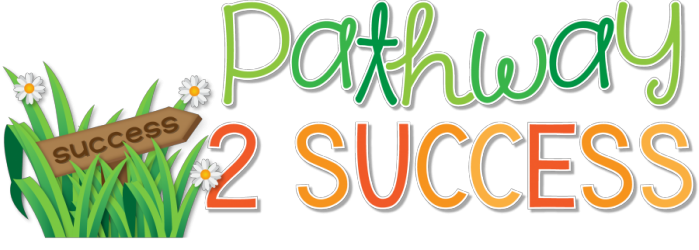
Mindfulness is the practice of turning your attention inward to focus on the current moment. While mindful practices are well-known for their abilities to create calm and relaxation, mindfulness also plays a critical role in sharpening our executive functioning skills. This means that we can harness the power of mindfulness to help kids and teens who need an extra boost with skills like attention, self-control, and working memory. In this article, let’s take a deep dive into why it matters and how to get started.
The Link Between Mindfulness and Executive Functioning
Executive functioning skills are the brain-based abilities we use to plan, initiate tasks, manage our time, and work through challenges. We use these skills every single day, often without thinking about it at all! That’s the beauty of executive functioning skills – when these skills are strong, we use them well to reach our goals without even realizing it.
Practicing mindfulness has been shown to strengthen several different executive functioning skills. In many ways, this makes sense. When we are calm, our “thinking brain” is activated. This allows us to make better choices, focus more effectively, and problem-solve through challenges. The best part is that mindfulness is a simple, meaningful, and engaging activity we can practice with kids and young adults of all ages. As an evidence-based strategy, it’s worthwhile to consider adding some mindful practices into your day. Let’s delve into how mindfulness makes a difference and what strategies we can use to get started.

Focus and Attention
What is attention? Attention is the ability to focus on a person, task, or idea for a period of time. Kids and teens use attention skills in everything they do from having a thoughtful conversation with a friend to staying focused while completing a math assignment.
How does mindfulness build attention? Mindfulness exercises directly train focus and attention skills. By spending time focusing solely on your breathing, you are training your mind to focus on the “right now.” As you practice, you will notice that your attention starts to drift. That’s normal! The key here is that you bring your focus back to your breath. In turn, this strengthens both your attention skills and your mindfulness practice over time.
Self-Control
What is self-control? Self-control is the ability to stop and think before making a decision. It involves using inhibition to pause yourself instead of acting on impulse.
How does mindfulness build self-control? Mindfulness provides practice in pausing before reacting. The more we practice mindfulness, the stronger the ability gets. For example, imagine a teen walking by a locker with a balloon taped to it for someone’s birthday. The first impulse may be to pop that balloon. With extra mindfulness practice, though, that same learner may be able to pause, breathe, and let the impulse go before reacting. Of course, this has huge implications as self-control allows us to make the best choices for the short-term and the long-term.
Emotional Regulation
What is emotional regulation? Emotional regulation is the ability to understand and manage your daily emotions. This is a critical skill, as it lays the groundwork for how we feel, think, and act throughout the day.
How does mindfulness build emotional regulation? Practicing mindfulness helps individuals become more aware of their feelings without being overwhelmed by them. This improved self-awareness then helps set the stage for managing feelings in more appropriate ways. For example, imagine a teen is upset when a friend doesn’t work to work with them. Instead of yelling, crying or shutting down, a few mindful deep breaths can help recenter the teen to a more calm state. Then, the teen can problem-solve about how to move forward in other healthier ways.
Working Memory
What is working memory? Working memory is the ability to keep information in your mind while you’re working with it. People use working memory in many different ways, such as listening to multi-step instructions, remembering details in a story, and solving math problems.
How does mindfulness strengthen working memory? Practicing mindfulness on a regular basis reduces mental clutter. By emptying out extra thoughts, we make room for the important information we need in the moment. An example of this might include a student who is trying to follow their teacher’s instructions for a morning work activity. Instead of feeling overwhelmed with tons of thought in their head, the learner practiced mindfulness in the morning, providing them a “clean slate” to help start their day.
Flexible Thinking
What is flexible thinking? Flexible thinking is our ability to see situation in different ways. It involves being able to perspective-take, consider alternate ideas, and adapt our mindset to new situations.
How does mindfulness support flexible thinking? Practicing mindfulness encourages non-judgemental acceptance of thoughts and experiences. With practice, you learn to accept what is, even if it’s challenging or unfavorable. Imagine a young adult who is given critical feedback on an essay they’ve been writing. Instead of taking that feedback personally, flexible thinking can allow them to consider the feedback in a non-judgemental way. This helps create a pathway for growth and learning.
Perseverance
What is perseverance? Perseverance is the ability to stick with something, even when it’s challenging. This is a skill we all use to work through difficulties in order to achieve a goal.
How does mindfulness strengthen perseverance? During each mindful practice, it can be challenging to “stick with it.” Your mind may want to wander and you start to think about other things you want to do instead. This truly is normal. What’s important is that by practicing mindfulness over a period of time, we are practicing sticking with it, even when we want to give up. This is perseverance in action.
Mindfulness Strategies for Kids and Teens
Before embarking down the path of mindfulness with kids and teens, spend some time discussing the benefits. Explain to learners that mindfulness helps them do and feel their best. It’s a strategy they can use to feel more calm before giving a speech in front of the class. It’s also a technique they can use to feel more focused and alert before playing in an important sports game. While these are a few fun examples, it’s important to stress that mindfulness is for anything and everything.
Mindfulness lessons and activities
Make teaching mindfulness easy with these mindfulness lessons and activities designed for kids and young adults. This set includes everything you need to get started – lessons, hands-on activities, crafts, discussion cards, coloring pages, posters, and more. It’s a great way to add mindfulness into your day. Best of all, the activities can be done again and again throughout the year.

Use Literature
A number of books provide an opportunity to discuss and practice mindfulness. Just a note that even picture books are a great tool to use with older kids! A few favorites include:
- “My Magic Breath” by Nick Ortener and Alison Taylor
- “I Am Peace” by Susan Verde
- “Breathe Like a Bear” by Kira Willey
- “What Does It Mean to be Present?” by Rana DiOrio

Mindful Breathing
Learning to focus on your breathing is foundational to the mindfulness practice. It’s a simple strategy kids and teens can use anywhere they go to help them focus on the “right now.” Start by sitting in a comfortable position. Slowly breathe in and slowly breathe out. Try to focus on your breath, noticing the sensations of the air hitting your nose or lungs. If your mind starts to wander (and it will), just come right back to the breathing. It’s a practice you will strengthen over time.
Once you’ve tried a basic mindful breathing activity, you can add in more engaging mindful breathing exercises like “Cool Off the Pizza” and “Shape Breathing.” Besides being a mindfulness tool, they can also be a great brain break between tasks and activities to help set the tone for success.

Mindful Coloring
Mindful coloring allows you to focus all of your attention on your coloring in the moment. It’s important to just color – don’t get caught up in coloring “perfectly” or making your art look a certain way. Just breathe, color, and be! Use these free mindfulness coloring pages to get started.

Yoga and Stretching
Integrate gentle movements with yoga and stretching while practicing mindfulness. Remember to slowly breathe in and out as you follow along with the exercises.
Mindful Journal Writing
Start your day with a mindfulness journal activity. Have students respond to a prompt, complete a guided activity, or free write to share their thoughts.

Outdoor Mindfulness
Spending time outside lends itself to many different mindfulness activities. Try some engaging mindfulness outdoor activities like taking a walk, gardening, blowing bubbles, watching wildlife or watching the clouds. The best part is that there is always something to focus on outside.
Mindful Affirmations
Add in some mindful affirmation phrases to repeat to yourself as you breathe in and out slowly. These are an excellent activity to start off your morning. Kids and teens can also keep a list in their binders, desks, or lockers. Some phrases to start off with include:
- I am enough.
- I am calm and relaxed.
- Calm is a place I can go.
- I am focused on right now.
- I am going at my own pace.
- I can slow down and breathe.

Mindful Observance
For this activity, find an object in front of you to focus on. Your object can be anything as simple as a pen or water bottle. As you breathe in and out slowly, pay careful attention to your object. Notice the shapes, colors, sounds, and smells. Giving all of your attention to one object can build your mindfulness muscles.
Research
- Doll A, Hölzel BK, Mulej Bratec S, Boucard CC, Xie X, Wohlschläger AM, Sorg C. Mindful attention to breath regulates emotions via increased amygdala-prefrontal cortex connectivity. Neuroimage. 2016 Jul 1;134:305-313. doi: 10.1016/j.neuroimage.2016.03.041. Epub 2016 Mar 24. PMID: 27033686.
- Fincham, G.W., Strauss, C., Montero-Marin, J. et al. Effect of breathwork on stress and mental health: A meta-analysis of randomised-controlled trials. Sci Rep 13, 432 (2023).
- Keng SL, Smoski MJ, Robins CJ. Effects of mindfulness on psychological health: a review of empirical studies. Clin Psychol Rev. 2011 Aug;31(6):1041-56. doi: 10.1016/j.cpr.2011.04.006. Epub 2011 May 13. PMID: 21802619; PMCID: PMC3679190.
- Ma X, Yue ZQ, Gong ZQ, Zhang H, Duan NY, Shi YT, Wei GX, Li YF. The Effect of Diaphragmatic Breathing on Attention, Negative Affect and Stress in Healthy Adults. Front Psychol. 2017 Jun 6;8:874. doi: 10.3389/fpsyg.2017.00874. PMID: 28626434; PMCID: PMC5455070.






Leave a Reply